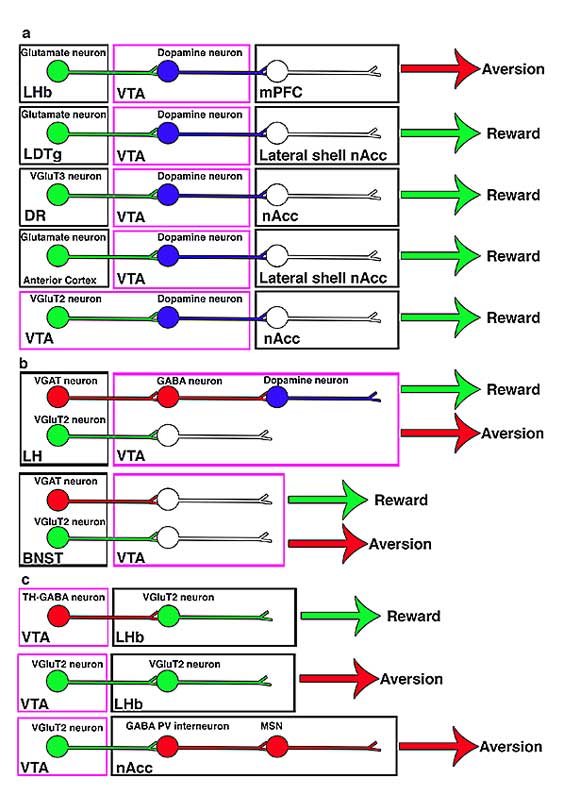Reviews To Read – June 2017
Morales, Marisela; Margolis, Elyssa B
Ventral tegmental area: cellular heterogeneity, connectivity and behaviour. Journal Article
In: Nat Rev Neurosci, vol. 18, no. 2, pp. 73–85, 2017, ISSN: 1471-0048 (Electronic); 1471-003X (Linking).
@article{Morales:2017aa,
title = {Ventral tegmental area: cellular heterogeneity, connectivity and behaviour.},
author = {Marisela Morales and Elyssa B Margolis},
url = {https://www.ncbi.nlm.nih.gov/pubmed/28053327},
doi = {10.1038/nrn.2016.165},
issn = {1471-0048 (Electronic); 1471-003X (Linking)},
year = {2017},
date = {2017-02-01},
journal = {Nat Rev Neurosci},
volume = {18},
number = {2},
pages = {73--85},
address = {Neuronal Networks Section, Integrative Neuroscience Research Branch, National Institute on Drug Abuse, 251 Bayview Boulevard, Suite 200, Baltimore, Maryland 21224, USA.},
abstract = {Dopamine-releasing neurons of the ventral tegmental area (VTA) have central roles in reward-related and goal-directed behaviours. VTA dopamine-releasing neurons are heterogeneous in their afferent and efferent connectivity and, in some cases, release GABA or glutamate in addition to dopamine. Recent findings show that motivational signals arising from the VTA can also be carried by non-dopamine-releasing projection neurons, which have their own specific connectivity. Both dopamine-releasing and non-dopamine-releasing VTA neurons integrate afferent signals with local inhibitory or excitatory inputs to generate particular output firing patterns. Various individual inputs, outputs and local connections have been shown to be sufficient to generate reward- or aversion-related behaviour, indicative of the impressive contribution of this small population of neurons to behaviour.},
keywords = {},
pubstate = {published},
tppubtype = {article}
}
Dopamine-releasing neurons of the ventral tegmental area (VTA) have central roles in reward-related and goal-directed behaviours. VTA dopamine-releasing neurons are heterogeneous in their afferent and efferent connectivity and, in some cases, release GABA or glutamate in addition to dopamine. Recent findings show that motivational signals arising from the VTA can also be carried by non-dopamine-releasing projection neurons, which have their own specific connectivity. Both dopamine-releasing and non-dopamine-releasing VTA neurons integrate afferent signals with local inhibitory or excitatory inputs to generate particular output firing patterns. Various individual inputs, outputs and local connections have been shown to be sufficient to generate reward- or aversion-related behaviour, indicative of the impressive contribution of this small population of neurons to behaviour.

